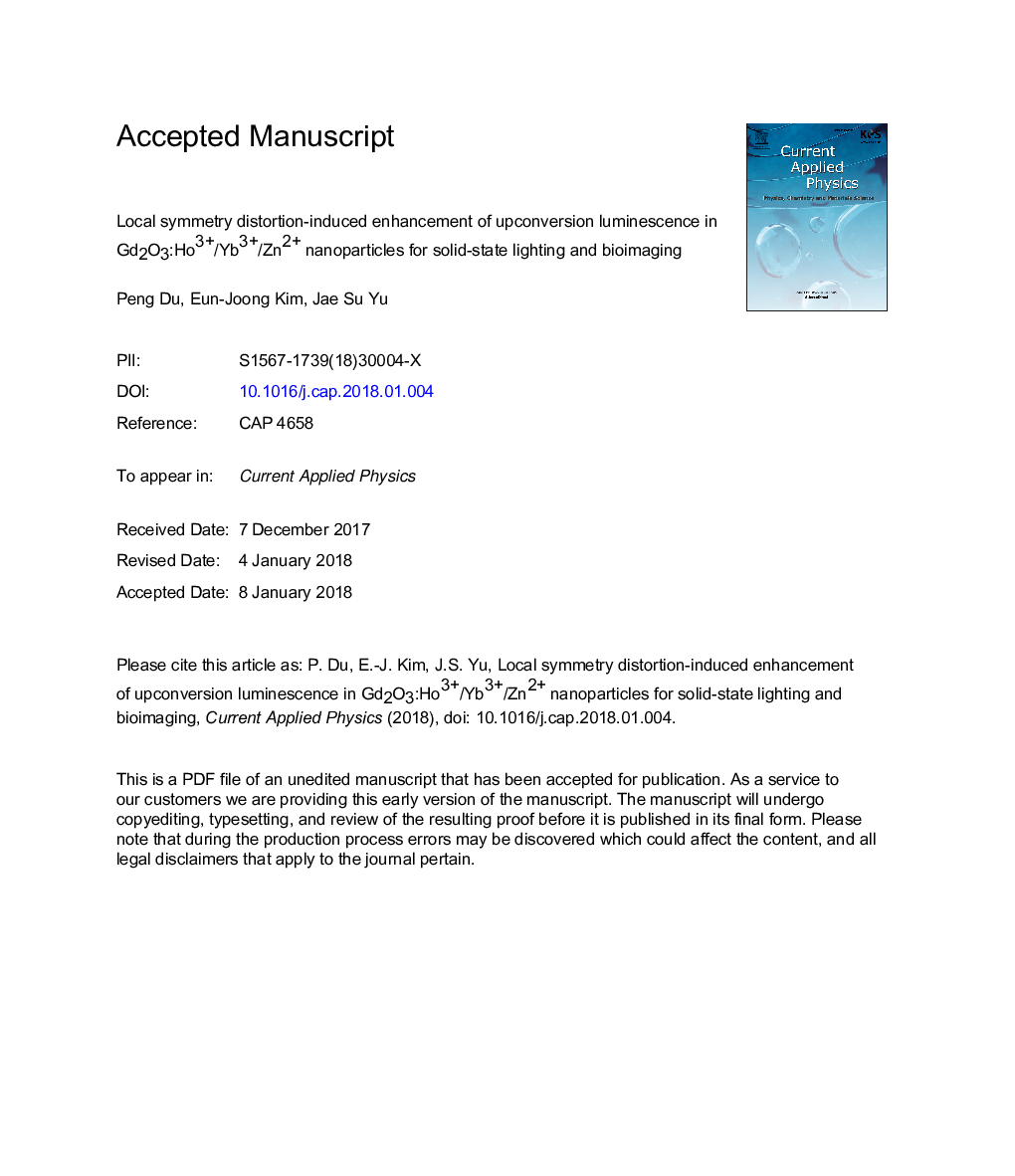| Article ID | Journal | Published Year | Pages | File Type |
|---|---|---|---|---|
| 8148036 | Current Applied Physics | 2018 | 24 Pages |
Abstract
The Ho3+/Yb3+/Zn2+-tridoped Gd2O3 nanoparticles were prepared by a simple urea-based homogeneous precipitation method. Under near-infrared (NIR) light excitation, all the synthesized nanoparticles exhibit bright green and red upconversion (UC) emissions corresponding to the intra-4f transitions of Ho3+ ions and the UC mechanism is found to be a two-photon process. With the introduction of Zn2+ ions, not only the local symmetry surrounding the dopants is decreased, but also the UC emission intensity is also enhanced, which is further verified by the Judd-Ofelt theory. The temperature-dependent UC emission spectra were recorded to examine the thermal stability of the final products. From theoretical calculations, the activation energy is found to be about 0.18 eV. A novel green light-emitting diode device, which consists of the resultant nanoparticles and a NIR chip, was fabricated to examine their suitability for solid-state lighting. Meanwhile, the synthesized nanoparticles exhibit low cytotoxicity in various cell lines, suggesting their potential applications in in vivo UC luminescence imaging. Additionally, the applicability of the Ho3+/Yb3+/Zn2+-tridoped Gd2O3 nanoparticles for in vivo bioimaging applications was also analyzed.
Related Topics
Physical Sciences and Engineering
Physics and Astronomy
Condensed Matter Physics
Authors
Peng Du, Eun-Joong Kim, Jae Su Yu,
